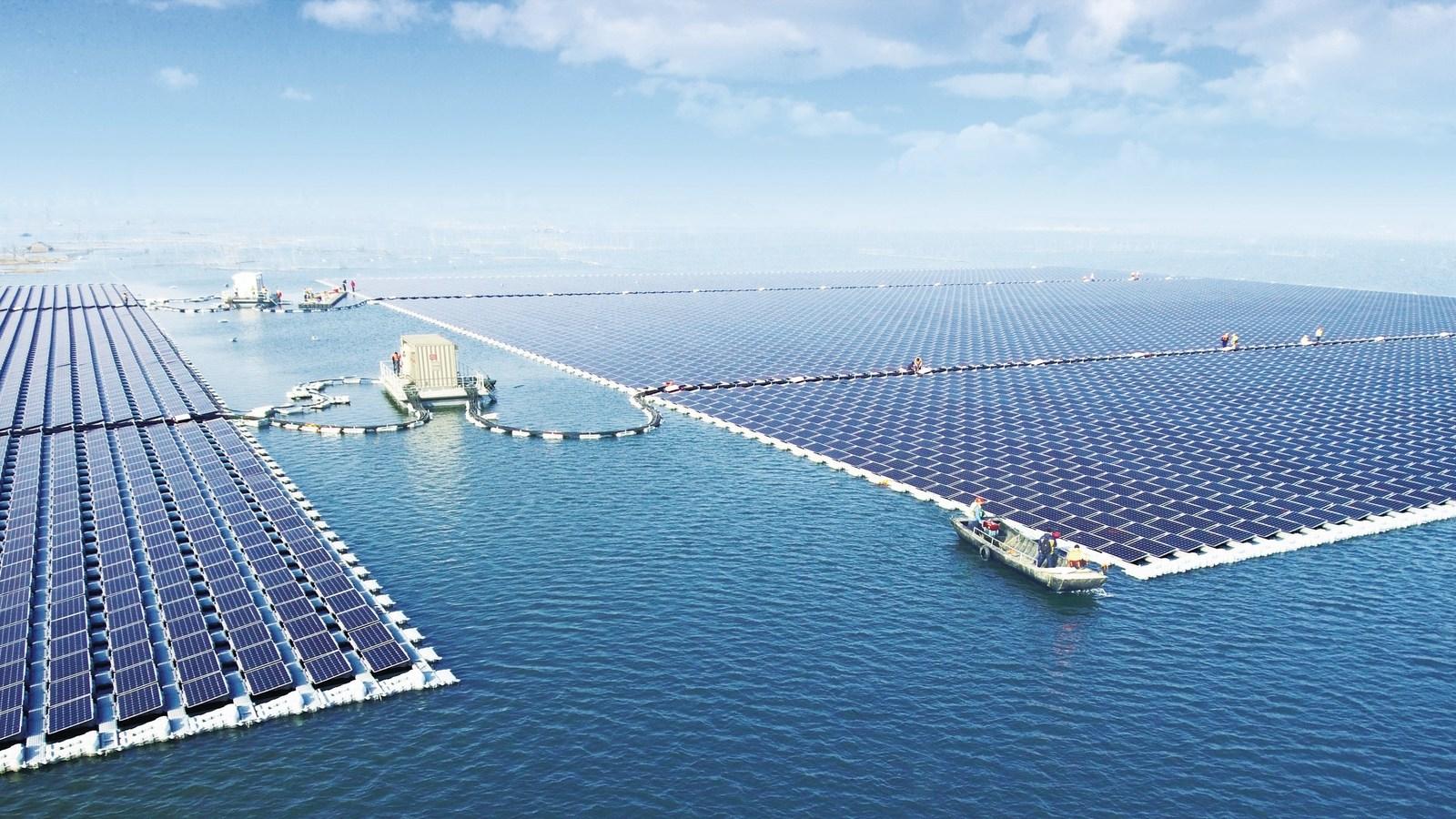The Netherlands is the latest country to explore the possibility of floating solar farms
Many densely populated nations are finding it hard to locate large sections of land to dedicate to the development of utility-scale solar projects. For more and more countries who are dedicated to reducing carbon and moving into the future with clean, renewable electrical generation, this means looking to the water to locate solar farms.
As with the large-scale windpower projects located offshore in the past, solar developers are finding that there are many advantages to offshore solar. The panels stay cooler, and efficiency ratings go up. There are little to no costs involved with location, and because the generation can be built in modular units on land and delivered to the location ready to “plug-and-play,” installation costs can be lower.
The Netherlands is the latest to go with offshore solar
According to Reuters, an offshore seaweed farm in the North Sea will be supplying the Dutch mainland with clean renewable energy within 3 years. Launching this summer with a pilot project of 30 square meters of panels, the project will expand to cover 2,500 square meters and provide enough electricity for 500 typical Dutch homes.The pilot project will be managed by Utrecht University and is located about nine miles off the coast of Dutch city of The Hague.
“In addition to removing the problem of a land shortage, there are several other benefits to building at sea, similar to those in wind energy,” said solar energy expert Wilfried van Sark. one of Utrecht University’s lead investigators.
“There is more sun at sea and there is the added benefit of a cooling system for the panels, which boosts output by up to 15 percent,”said Allard van Hoeken, founder of Oceans of Energy, which devised the project. Van Hoeken said he expects offshore solar energy to eventually be cheaper than offshore wind and mainland power sources, due mainly to a lack of land costs.
China converts environmental disaster site into floating solar plant
The Dutch are not the first to consider the many benefits of locating solar generation off-shore. Last year, Chinese company Sungrow opened its first floating solar power plant. The facility is located not on the ocean, but on a huge flooded coal mining facility. The giant, unintentional manmade lake now serves as a cooling system that improves the performance of the 40 megawatt solar farm. The plant is connected to the grid in Huainan.
Sungrow specializes in integrated inverter technology and their central inverter SG2500-MV employed in this plant features integrated inverter, transformer and the switchgear. The turnkey station has lower transportation cost due to its 20-foot containerized design and is specially ruggedized to handle the high level of humidity and salt spray.
Japan is a leader in offshore solar
In 2013, solar manufacturing giant Kyocera entered into a partnership with six other companies to launch Japan’s first offshore solar project. The 70MW Kagoshima Nanatsujima Mega Solar Power Plant was built to take advantage of Japan’s feet-in tariff (FIT) for new, renewable generating facilities.
Expectations and interest in solar energy have heightened to a new level in Japan with the need to resolve power supply issues resulting from the Great East Japan Earthquake of March 2011. To further promote the use of renewable energy, the Japanese government launched a restructured FIT program in July 2012, which stipulates that local utilities are required to purchase 100% of the power generated from solar installations of more than 10 kilowatts (kW) for a period of 20 years.
Seawater benefits solar manufacturers as well
Seawater could prove to be a “game changer” for solar panels manufacturers and the whole industry. Since one of the key components in PV panels is Cadmium Chloride, which is extremely toxic and expensive, it affects both the manufacturing process and the price of solar panels.
Researchers from the University of Liverpool, however found out that seawater contains Magnesium Chloride, which could replace the highly toxic and pricy Cadmium Chloride. The fact that it can be extracted from seawater also means that supply is in abundance.
The price difference of the materials is more than significant. Cadmium Chloride costs around 300$ per kg and Magnesium Chloride on the other hand costs just 1$ per kg and is so safe that it is used for producing products such as bath salts and tofu.In terms of efficiency, the Liverpool research shows that Magnesium Chloride can have the exact same effect as it’s toxic substitute.
Thus replacing Cadmium Chloride with Magnesium Chloride would save the industry a massive amount of money and reduce risks of producing solar panels. This way, the natural solar energy can be generated by a product that relies heavily on a natural material itself. With prices going further down, panels will become available for a bigger portion of the population. You can find additional information about the research here.
al information about the research here.





